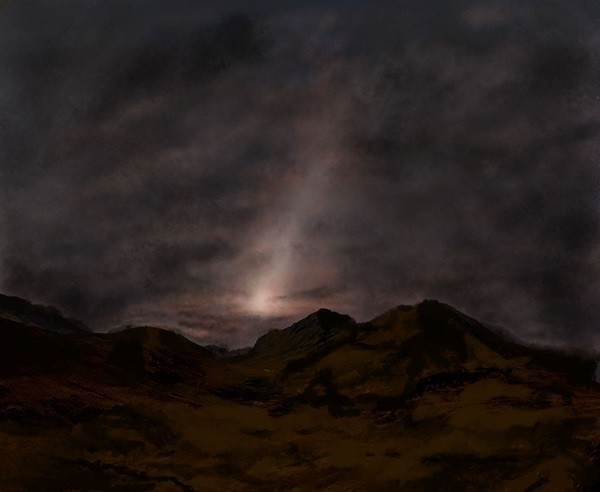
Kepler-1229b is a planet 2.7 times the mass of Earth in the habitable zone of a red star. Studies indicate that zodiacal light might be visible from its surface, creating a red, almost lavalike glow in the night sky.
One of the most coveted sights for skygazers is the zodiacal light, a tall cone of whitish light that climbs the mid-latitude sky before dawn in autumn and at twilight in the spring. The light comes from the Sun glinting off dust particles in the Solar System and the dust, it seems, originates from comets and possibly even from Mars.
It turns out that anyone looking up on some exoplanets could see their own zodiacal light as well.
In excess
In research presented at the virtual 239th Meeting of the American Astronomical Society last week, Jian Ge of Shanghai Astronomical Observatory and Chinese Academy of Sciences — whose team included three high school students — described other solar systems where data suggest there exist debris disks that could give rise to otherworldly zodiacal light.
Ge worked with Chinese and American colleagues, including high schoolers Larry Ge, Amanda Hao, and Justin Hou. They gathered information from a number of sources, including the Kepler space telescope, the former Wide-field Infrared Survey Explorer space telescope, the Gaia mission. The team looked at three worlds: the super-Earths Kepler-69c, Kepler-1229b, and Kepler-395c, all of which may be habitable. They sleuthed a variety of infrared data, searching for “extra” emission in the infrared portion of the spectrum. This excess is indicative of solar system dust and debris absorbing light and re-radiating it at longer wavelengths.
What’s more, they found dust as hot as 260 degrees Fahrenheit (127 degrees Celsius). Based on the similar temperature of our solar system’s own zodiacal dust, this suggests dust lurking close to at least two of the planets.

On Kepler-69c, a super-Earth 2.1 times the mass of our planet with a Venus-like atmosphere, the zodiacal light might appear as a narrow, bright band of white light.
Details in the dust
The team’s illustrations portray a poetic sense of the possible views. On both Kepler-1229b and Kepler-395c, red host stars would render an almost volcanic-looking zodiacal light. On Kepler-69c, the planet’s venusian environment might turn its zodiacal light into a white searchlight in a dark muted sky.
These results are not just aesthetic. The presence of dust suggests there could be — especially in the two younger systems — active formation of small objects like moons and minor planets. The prospect can help foster future research into how such smaller objects can both collide into and stabilize exoplanets.
“Younger planet systems experience more activities (such as comet activities and asteroid collisions),” Ge told Astronomy. But “we cannot rule out that some old systems experience occasional activities.” For example, the oldest system, Kepler-69, might have been experiencing increased activity — such as collisions or cometary activity — close to the star while Kepler was observing it, Ge says.
As to anyone — or anything — actually looking up from those planets to see the zodiacal light, well, theoretically it’s possible.
Although Ge says astronomers have previously found debris disks around other systems, none of them were considered habitable. “Our work is the first-ever on zodiacal light and debris disks around habitable planet systems,” Ge says.
So, the next time you’re hunting for the zodiacal light here on Earth, perhaps you can stretch your imagination to some other worlds where eyes are also looking.
Source: Astronomy Magazine